Modification of Peck Formula to Predict Surface Settlement of Tunnel Construction in Water-Rich Sandy Cobble Strata and Its Program Implementation
Abstract
:1. Introduction
2. Modification of Peck Formula
2.1. Peck Formula Theory
- S (x)—land subsidence at x from the center line of the tunnel, m.
- Smax—land subsidence at the center line of the tunnel, m.
- X—distance from tunnel center line, m.
- i—settlement trough width coefficient, i.e., the abscissa of the inflection point of subsidence curve.
- Vi—loss volume per unit length of tunnel induced by shield tunneling, m3.
- φ—internal friction angle of stratum around tunnel.
- Z—depth from ground surface to the tunnel center, m.
2.2. Regression and Analysis of Peck Formula
- constant term of the regression equation.
- linear coefficient of the regression equation.
- distance from the settlement monitoring point to the center line of the tunnel, m.
2.3. Regression Analysis of Typical Interval Examples
2.4. Form of the Modification of the Peck Formula
- α—correction coefficient of maximum land subsidence.
- β—correction coefficient of settlement trough width.
- Smax—maximum land subsidence of Peck formula, m.
- i—coefficient of settlement trough width of Peck formula.
3. Program Implementation and Parameter Optimization of Peck Formula Modification
3.1. Development Environment
- Install Anaconda open-source package.
- Set up the Pycharm development environment. The specific operation methods include: creating a new project and then changing the “project interpreter” to “python.exe” in the Anaconda file directory.
- Install the PyQt graphics toolkit. Since Anaconda is a collection of Python-based scientific and technological packages, PyQt is already installed by default when Anaconda is set up. Therefore, the configuration is finished when QtDesigner is added in Pycharm as an external tool.
3.2. Procedure Flowchart
3.3. Program Operation Interface
3.4. Parameter Optimization of Peck Formula
4. Conclusions
- In the process of shield tunneling in the water-rich sandy gravel stratum in Luoyang, it was found that the prediction result of the original Peck formula was significantly larger than the measured data, indicating that the Peck formula needed to be modified.
- Based on the special geological conditions of the water-rich sandy cobble strata, two correction parameters, α and β, were introduced into the original Peck formula to correct for the maximum surface settlement and the width of the settlement trough, respectively.
- By means of linear regression methods, and in combination with on-site settlement monitoring data, it was determined that when the range values of α and β were 0.379–0.690 and 0.455–0.508, respectively, there was smaller error and more accurate prediction results. The modified Peck formula was especially suitable for tunnels in water-rich sandy cobble strata layers.
- The current construction of tunnels inevitably causes ground settlement, which impacts the ground and can even cause damage to surrounding buildings, so it is of practical importance to make timely and accurate predictions of ground settlement. In the process of predicting surface settlement, there is a need to collate and process large amounts of predicted data and tedious calculations. The use of a computer programming language to program the calculation of the modified Peck formula can greatly improve the efficiency of the calculation. Under the usual methods, it may take several days to determine α and β, but the application of a batch calculation program mode means that determination of α and β can be completed in just a few minutes. The correction parameters can then be quickly optimized during the subsequent construction process, greatly improving the efficiency and accuracy of the prediction, compared to ordinary manual calculations or semi-automatic modes.
Author Contributions
Funding
Institutional Review Board Statement
Informed Consent Statement
Data Availability Statement
Acknowledgments
Conflicts of Interest
References
- Song, K.Z.; Wang, M.S.; Sun, M. Reliability Analysis of Ground Settlement with Shield Tunnel Construction Based on Peck Formula. J. North. Jiaotong Univ. 2004, 28, 30–33. [Google Scholar]
- Peck, R.B. Deep Excavations and Tunneling in Soft Ground. In Proceedings of the 7th International Conference on Soil Mechanics and Foundation Engineering, Mexico City, Mexico, 29 August 1969; Volume 7, pp. 225–290. Available online: https://www.issmge.org/publications/publication/deep-excavations-and-tunneling-in-soft-ground (accessed on 4 November 2022).
- Attewell, P.B.; Selby, A.R. Tunnelling in Compressible Soils: Large Ground Movements and Structural Implications. Tunn. Undergr. Space Technol. 1989, 4, 481–487. [Google Scholar]
- New, B.M.; O’reilly, M.P. Settlements above Tunnels in the United Kingdom—Their Magnitude and Prediction; Institution of Mining & Metallurgy: London, UK, 1982; pp. 173–181. [Google Scholar]
- Hu, C.; Chao, F.; Yuan, M.; Yuan, Y. Modifying of Peck’s Settlement Calculation Formula Related to Metro Tunnel Construction in Xi’an Water-rich Sand. Chin. J. Undergr. Space Eng. 2018, 14, 176–181. [Google Scholar]
- Zhang, Q.; Wu, K.; Cui, S.; Yu, Y.; Zhang, Z.; Zhao, J. Surface Settlement Induced by Subway Tunnel Construction Based on Modified Peck Formula. Geotech. Geol. Eng. 2019, 37, 2823–2835. [Google Scholar] [CrossRef]
- Hu, Y.; Lei, H.; Zheng, G. Ground movement induced by triple stacked tunneling with different construction sequences. J. Rock Mech. Geotech. Eng. 2022, 14, 1433–1446. [Google Scholar] [CrossRef]
- Zhang, P.; Pan, Y.; Yu, Z.; Guan, X.; Wang, G.; An, J.; Lei, H. Ground subsidence characteristics caused by construction of shallow-buried tunnel in a sandy soil composite formation. Arab. J. Geosci. 2020, 13, 901. [Google Scholar] [CrossRef]
- Fang, K.; Yang, Z.; Jiang, Y.; Sun, Z.; Wang, Z. Surface subsidence characteristics of fully overlapping tunnels constructed using tunnel boring machine in a clay stratum. Comput. Geotech. 2020, 125, 103679. [Google Scholar] [CrossRef]
- Heng, C.; Sun, S.; Zhou, Z.; Zhang, J. Prediction of Surface Settlement with Ultra-shallow-burial and Large Rectangular Cross-section Urban Underpass. KSCE J. Civ. Eng. 2019, 23, 4641–4650. [Google Scholar] [CrossRef]
- Zhang, Z.; Chen, J.; Zhang, M.; Yang, X. Modified Peck method of evaluating tunnelling-induced ground movements based on measured data. Arab. J. Geosci. 2022, 15, 862. [Google Scholar] [CrossRef]
- Zhou, Z.; Hao, H.D.; Lin, W.M.; Chen, J.; Gong, C. Predictive model for the surface settlement caused by the excavation of twin tunnels. Tunn. Undergr. Space Technol. 2021, 114, 104014. [Google Scholar] [CrossRef]
- Luo, W.; Yuan, D.; Jin, D.; Lu, P.; Chen, J. Optimal Control of Slurry Pressure during Shield Tunnelling Based on Random Forest and Particle Swarm Optimization. Comput. Model. Eng. Sci. 2021, 128, 109–127. [Google Scholar] [CrossRef]
- Mei, Y.; Zhang, X.; Zhang, S.; Wang, R.; Yang, T.; Zhang, Y. Experimental Study on Shield Tunneling Control in Full Section Water-Rich Sand Layer of Collapsible Loess. Geofluids 2022, 2022, 1–17. [Google Scholar] [CrossRef]
- Zhao, J.; Tan, Z.; Yu, R.; Jia, A.; Qu, C. Study on the Mix of Slurry Membrane for Soil Conditioning of EPB Shield and Its Application Effect in Water-Rich Gravel Strata. Adv. Civ. Eng. 2022, 2022, 7751053. [Google Scholar] [CrossRef]
- Wang, J.; Zhao, J.P.; Tan, Z.S.; Fu, S.Y. Comparative study on prediction models of EPB shield tunnelling parameters in the water-rich round-gravel formation. In Proceedings of the 2022 5th International Conference on Civil Architecture, Hydropower and Engineering Management, Quanzhou, China, 23–25 September 2022. [Google Scholar]
- Li, X.; Zhang, D.; Hou, Y. Analysis of Shield Tunnel Ground Deformation Characteristics and Affecting Factors in Water-Rich Soft Stratum: A Case Study on the Section Tunnel of Tianjin Metro Line 6. Appl. Sci. 2022, 12, 6208. [Google Scholar] [CrossRef]
- Yang, Y.; Li, X.; Jin, D.; Jiang, X.; Li, H. Prediction of Ground Surface Settlements Induced by EPB Shield Tunneling in Water-Rich Soft Strata. Appl. Sci. 2022, 12, 4665. [Google Scholar] [CrossRef]
- Zhang, Y.Q.; Cao, W.G.; Zhou, S.H. Prediction of three-dimensional subface and subsurface settlement caused by shield tunnelling based on Peck formula. J. Railw. Sci. Eng. 2021, 18, 153–161. [Google Scholar] [CrossRef]
- Johansson, R. Numerical Python: Scientific Computing and Data Science Applications with Numpy, SciPy and Matplotlib, 2nd ed.; Tsinghua University Press: Beijing, China, 2019; pp. 56–100. [Google Scholar] [CrossRef]
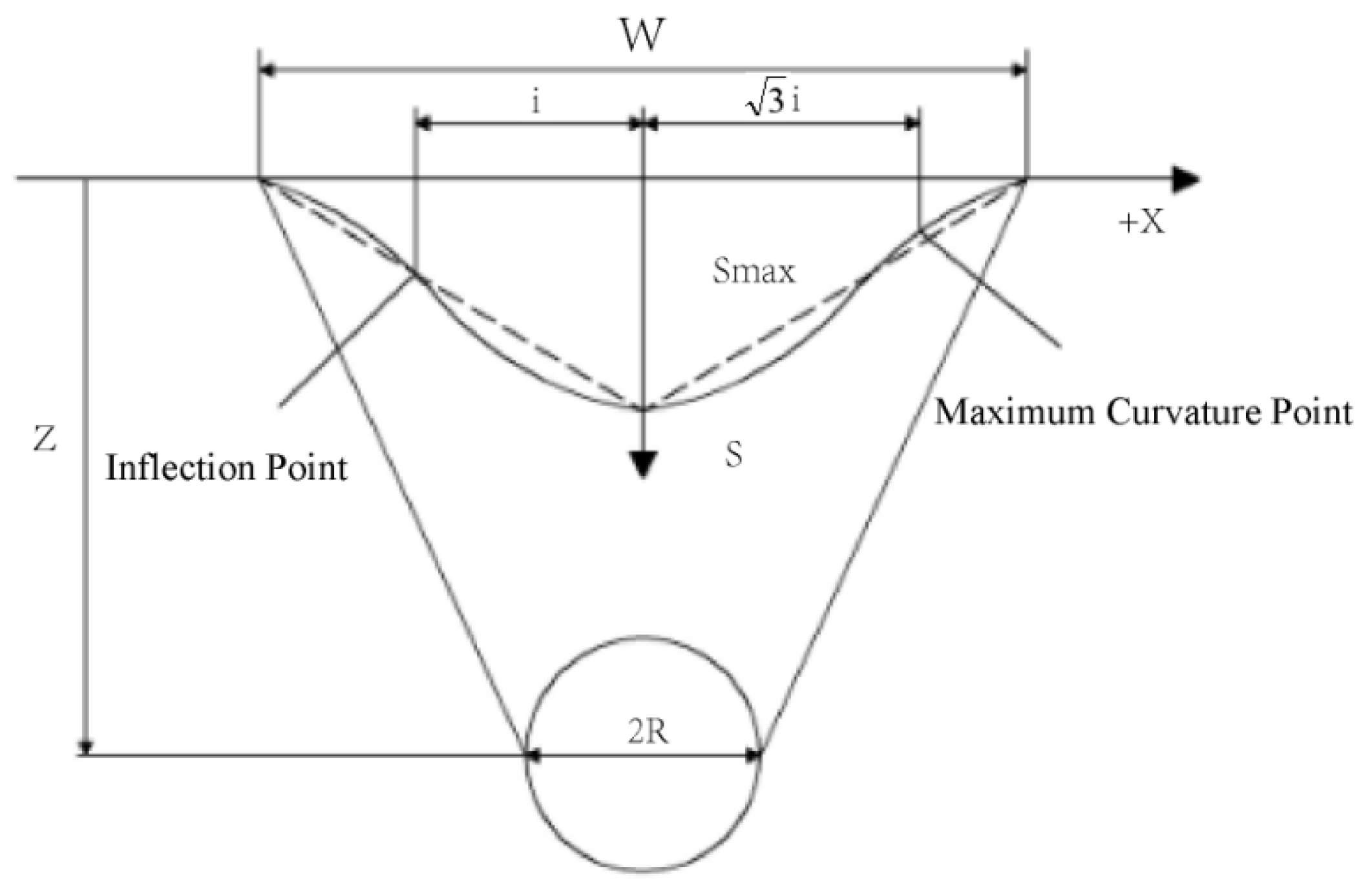
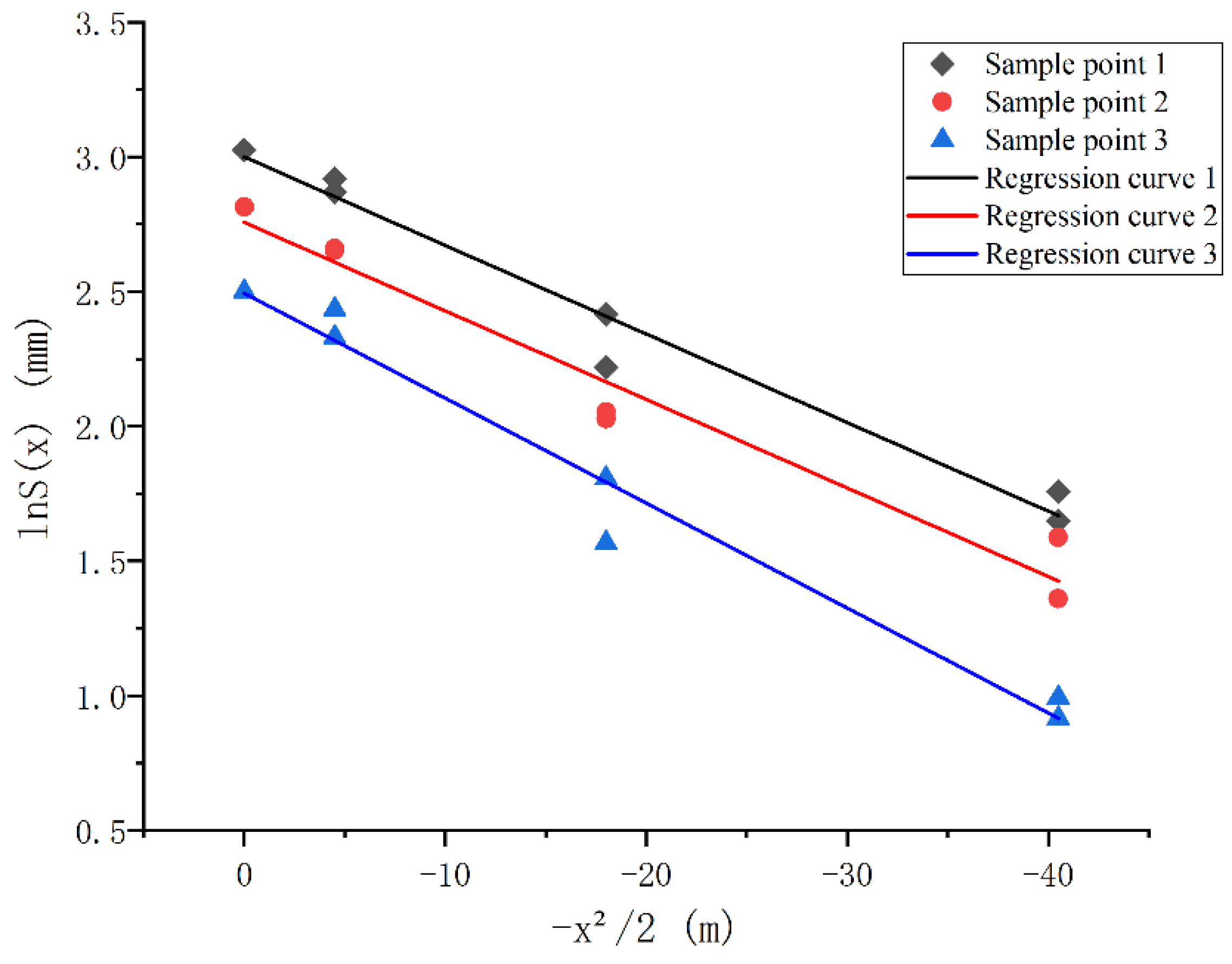
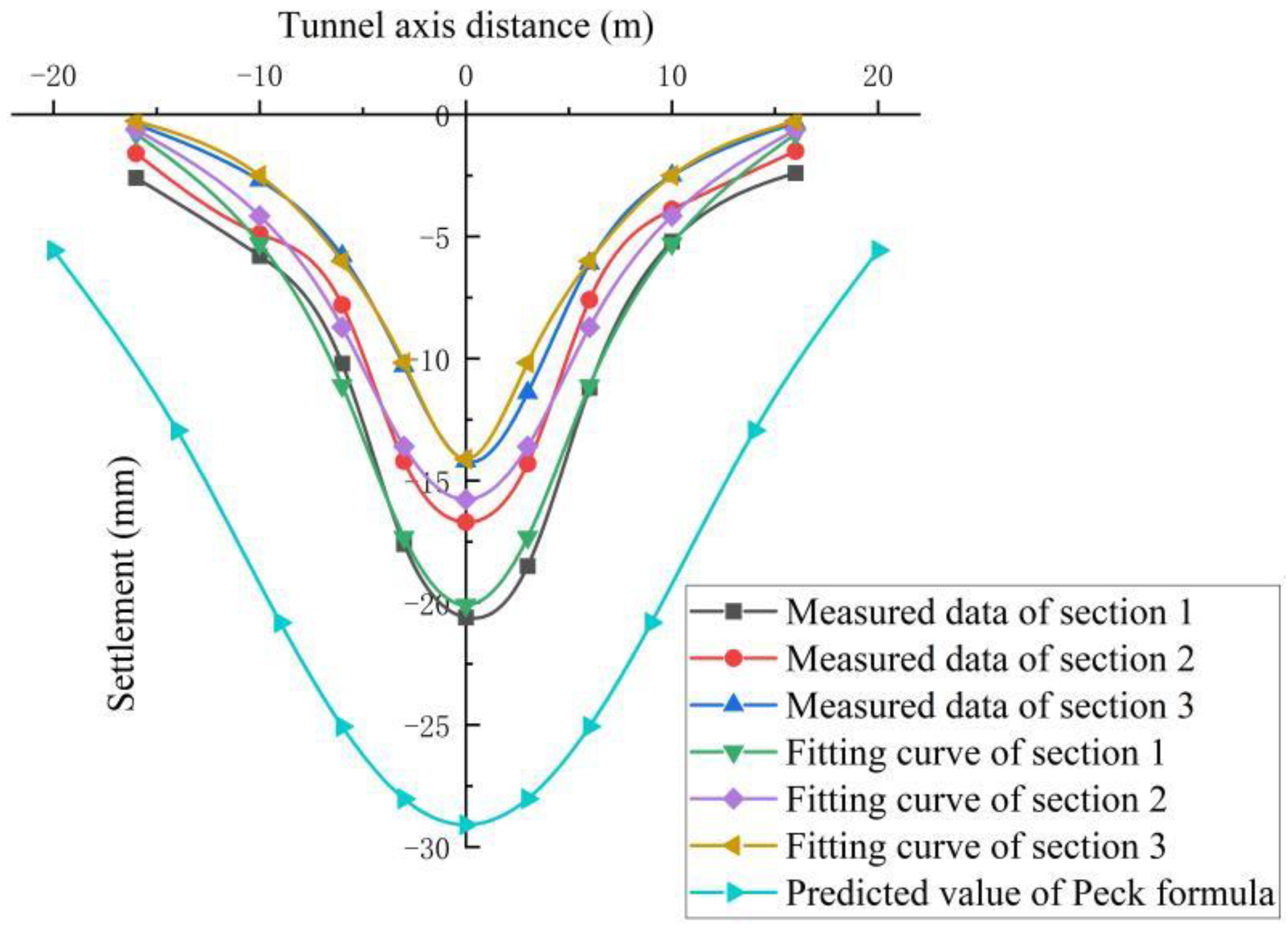
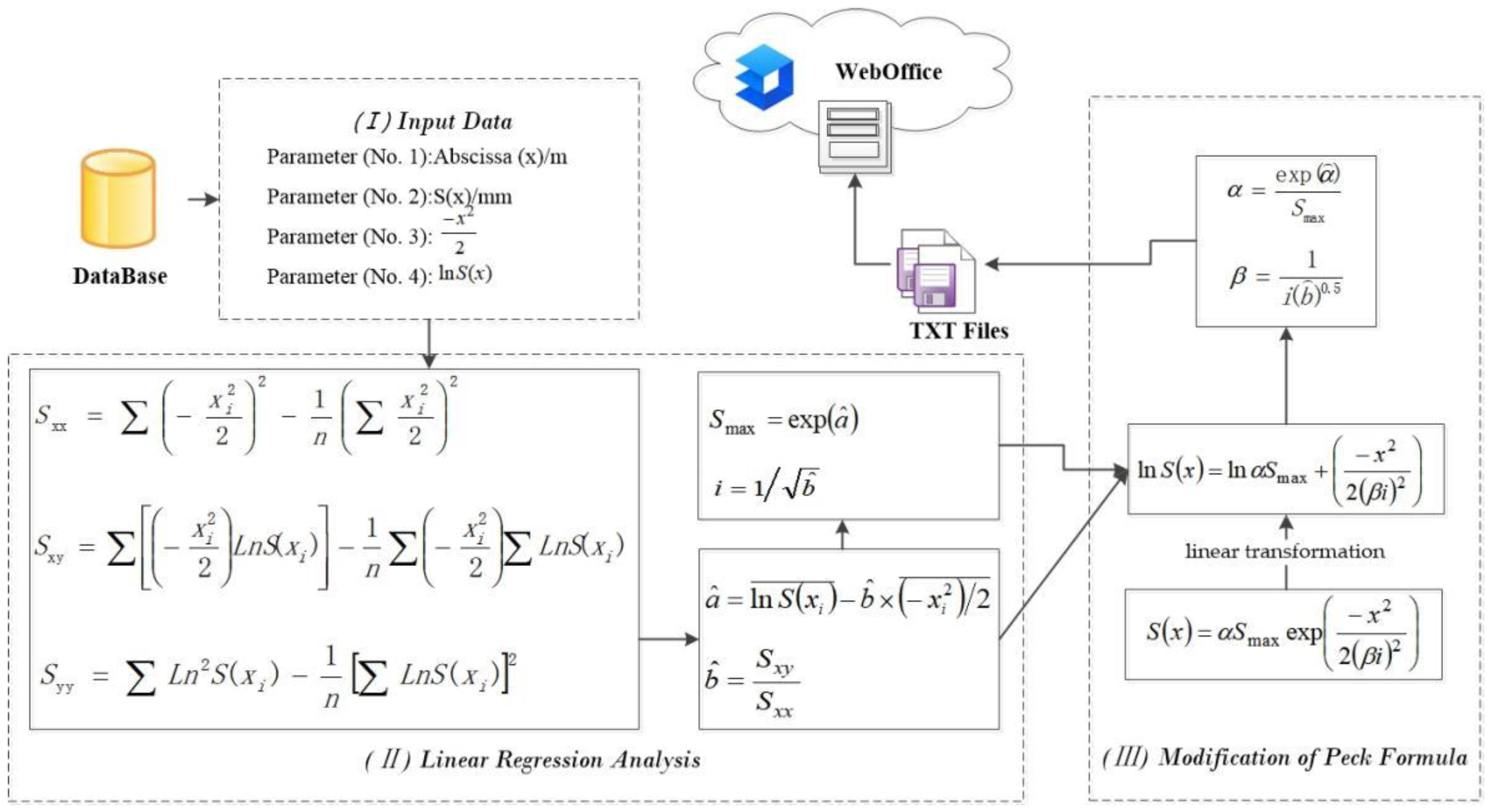
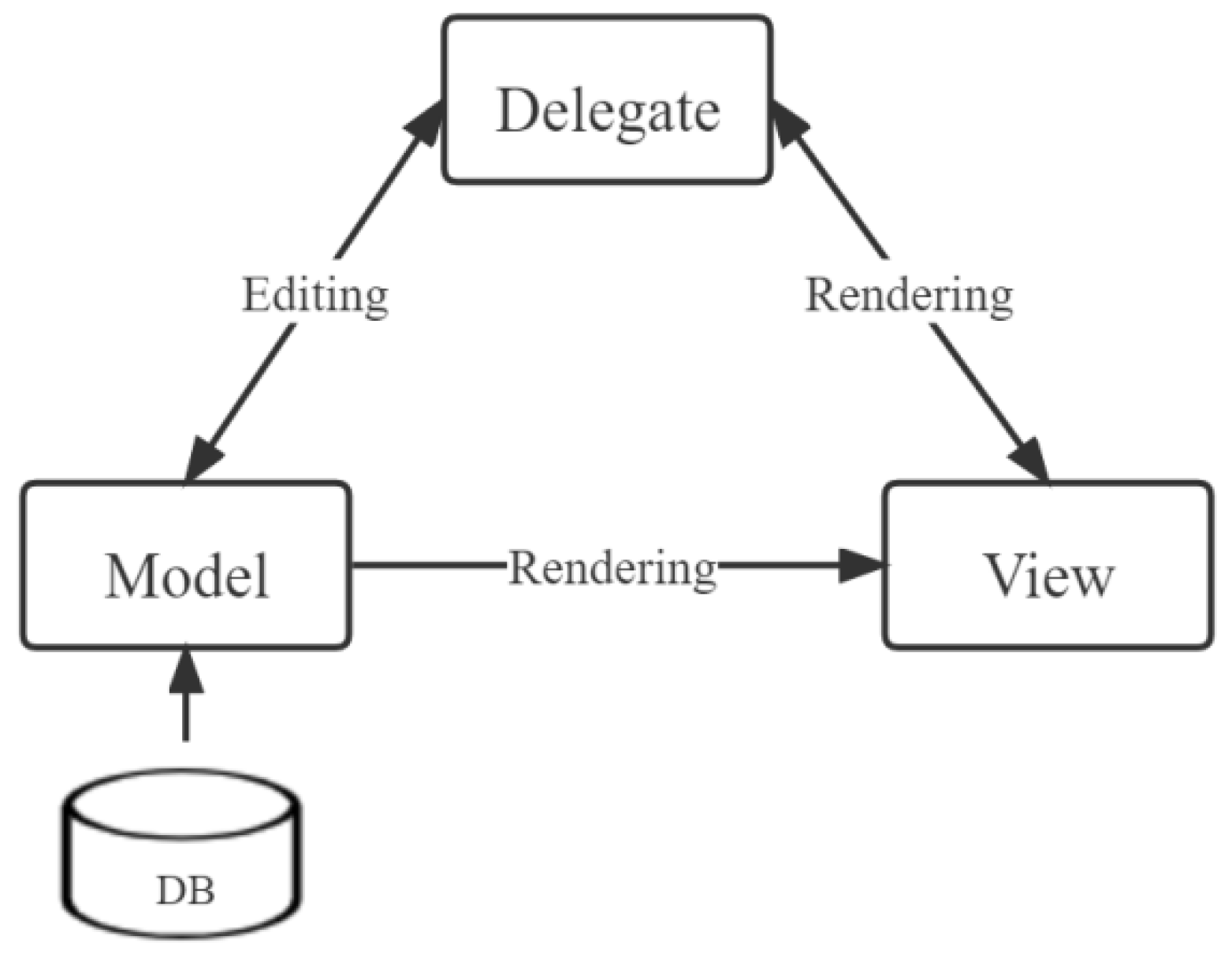
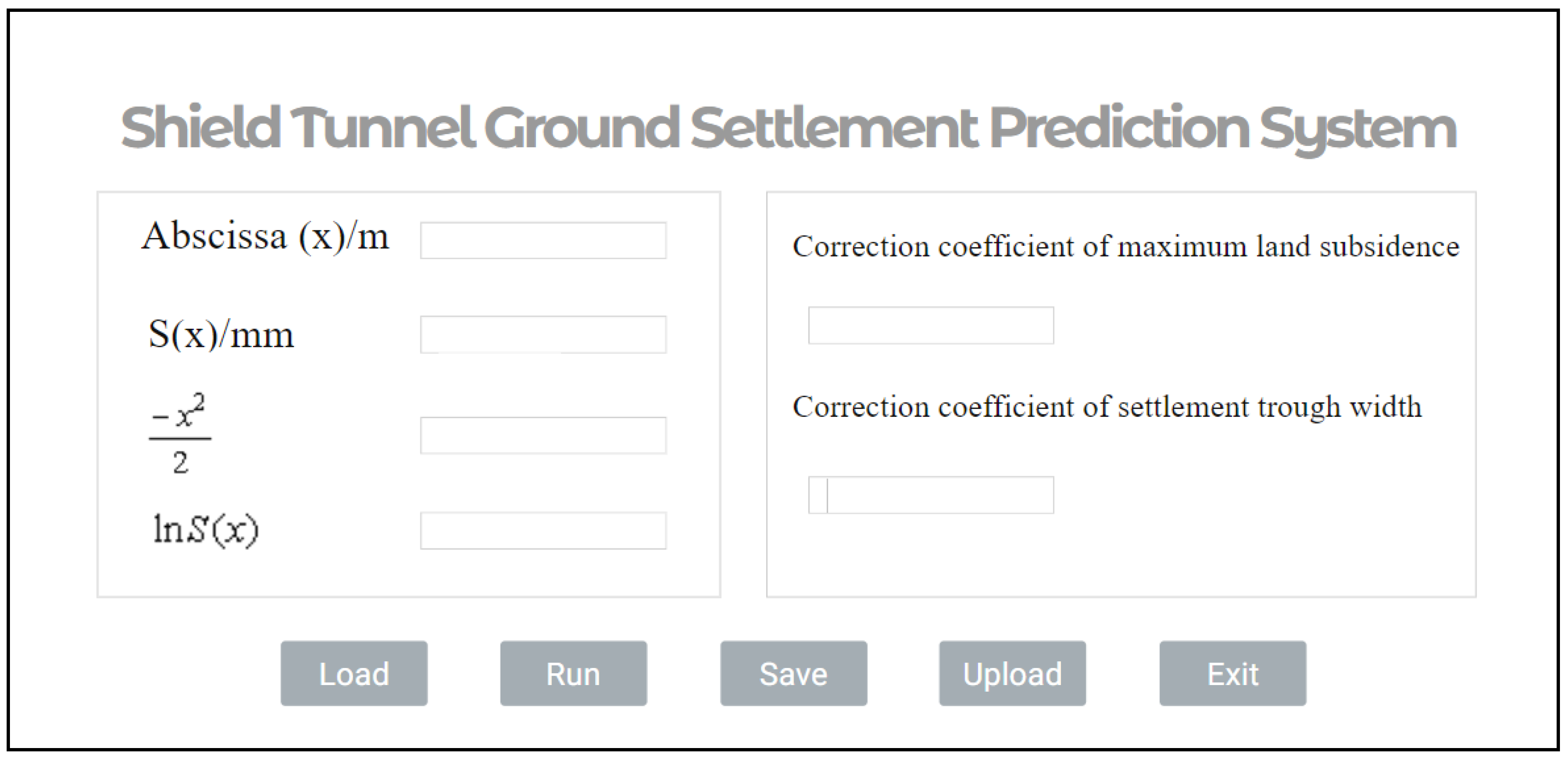
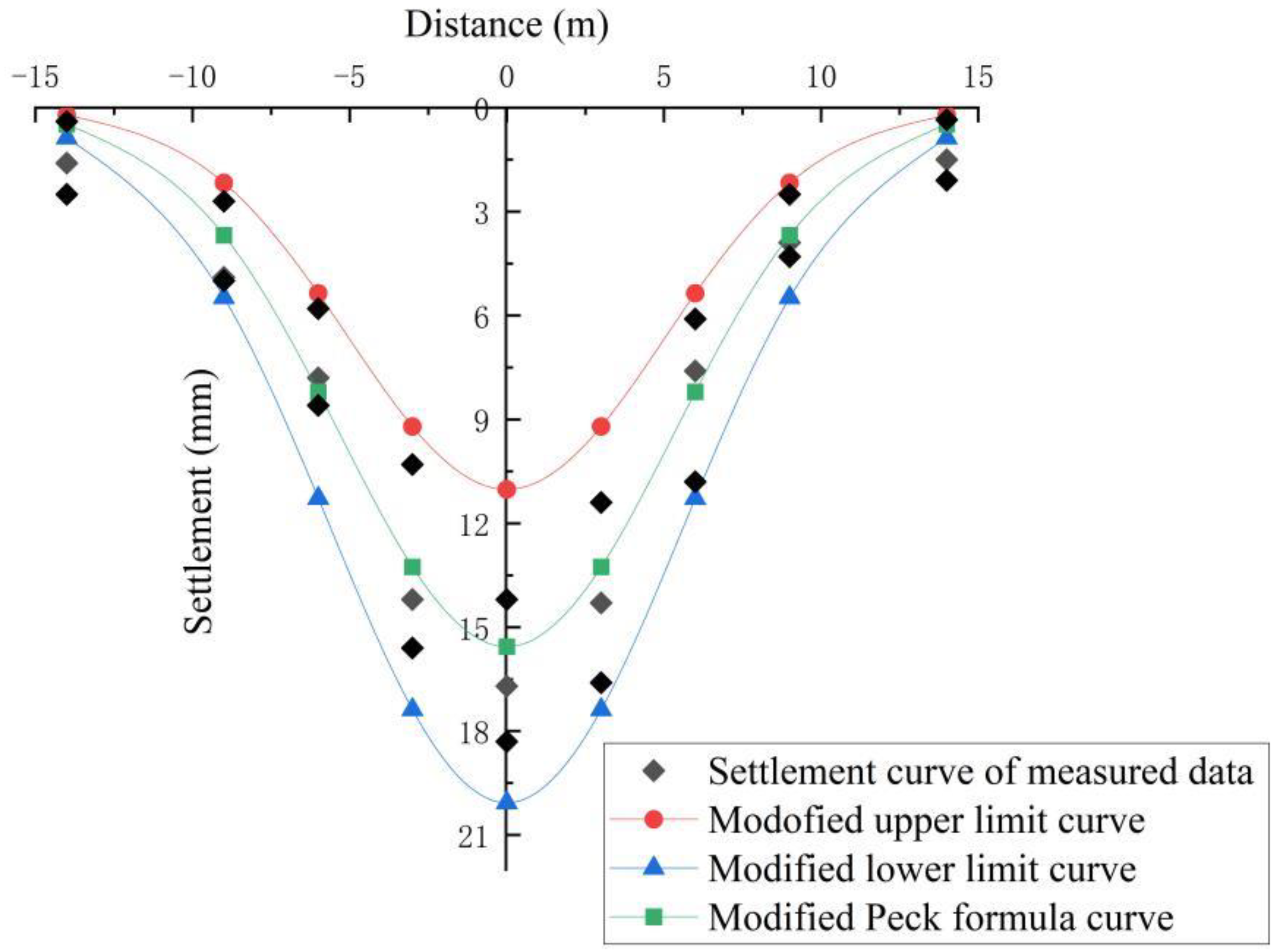
| Sample Point | Abscissa (x)/m | S(x)/mm | ||
|---|---|---|---|---|
| 1 | −14 | 2.6 | −98 | 0.956 |
| 2 | −9 | 5.8 | −40.5 | 1.758 |
| 3 | −6 | 10.2 | −18 | 2.322 |
| 4 | −3 | 17.6 | −4.5 | 2.868 |
| 5 | 0 | 20.6 | 0 | 3.025 |
| 6 | 3 | 18.5 | −4.5 | 2.918 |
| 7 | 6 | 11.2 | −18 | 2.416 |
| 8 | 9 | 5.2 | −40.5 | 1.649 |
| 9 | 14 | 2.4 | −98 | 0.875 |
| Sample Point | Abscissa (x)/m | S(x)/mm | ||
|---|---|---|---|---|
| 1 | −14 | 1.6 | −98 | 0.470 |
| 2 | −9 | 4.9 | −40.5 | 1.589 |
| 3 | −6 | 7.8 | −18 | 2.054 |
| 4 | −3 | 14.2 | −4.5 | 2.653 |
| 5 | 0 | 16.7 | 0 | 2.815 |
| 6 | 3 | 14.3 | −4.5 | 2.660 |
| 7 | 6 | 7.6 | −18 | 2.028 |
| 8 | 9 | 3.9 | −40.5 | 1.361 |
| 9 | 14 | 1.5 | −98 | 0.405 |
| Sample Point | Abscissa (x)/m | S(x)/mm | ||
|---|---|---|---|---|
| 1 | −14 | 0.4 | −98 | −0.916 |
| 2 | −9 | 2.7 | −40.5 | 0.993 |
| 3 | −6 | 5.8 | −18 | 1.758 |
| 4 | −3 | 10.3 | −4.5 | 2.332 |
| 5 | 0 | 14.2 | 0 | 2.501 |
| 6 | 3 | 11.4 | −4.5 | 2.434 |
| 7 | 6 | 6.1 | −18 | 1.808 |
| 8 | 9 | 2.5 | −40.5 | 0.916 |
| 9 | 14 | 0.35 | −98 | −1.050 |
| Distribution Interval | Distribution Proportion | Quantity |
|---|---|---|
| 2.0~2.2 | 1.45% | 2 |
| 2.2~2.4 | 6.52% | 9 |
| 2.4~2.6 | 18.84% | 26 |
| 2.6~2.8 | 45.65% | 63 |
| 2.8~3.0 | 21.01% | 29 |
| 3.0~3.2 | 5.80% | 8 |
| 3.2~3.4 | 0.72% | 1 |
| 2.2~2.4 | 6.52% | 9 |
| Distribution Interval | Distribution Proportion | Quantity |
|---|---|---|
| 0.028~0.030 | 1.45 | 2 |
| 0.030~0.032 | 7.97 | 11 |
| 0.032~0.034 | 25.36 | 35 |
| 0.034~0.036 | 33.33 | 46 |
| 0.036~0.038 | 18.84 | 26 |
| 0.038~0.040 | 10.87 | 15 |
| 0.040~0.042 | 2.17 | 3 |
Publisher’s Note: MDPI stays neutral with regard to jurisdictional claims in published maps and institutional affiliations. |
© 2022 by the authors. Licensee MDPI, Basel, Switzerland. This article is an open access article distributed under the terms and conditions of the Creative Commons Attribution (CC BY) license (https://creativecommons.org/licenses/by/4.0/).
Share and Cite
Gao, Y.; Liu, Y.; Tang, P.; Mi, C. Modification of Peck Formula to Predict Surface Settlement of Tunnel Construction in Water-Rich Sandy Cobble Strata and Its Program Implementation. Sustainability 2022, 14, 14545. https://doi.org/10.3390/su142114545
Gao Y, Liu Y, Tang P, Mi C. Modification of Peck Formula to Predict Surface Settlement of Tunnel Construction in Water-Rich Sandy Cobble Strata and Its Program Implementation. Sustainability. 2022; 14(21):14545. https://doi.org/10.3390/su142114545
Chicago/Turabian StyleGao, Yanxia, Yiwen Liu, Pengju Tang, and Chunqiao Mi. 2022. "Modification of Peck Formula to Predict Surface Settlement of Tunnel Construction in Water-Rich Sandy Cobble Strata and Its Program Implementation" Sustainability 14, no. 21: 14545. https://doi.org/10.3390/su142114545
APA StyleGao, Y., Liu, Y., Tang, P., & Mi, C. (2022). Modification of Peck Formula to Predict Surface Settlement of Tunnel Construction in Water-Rich Sandy Cobble Strata and Its Program Implementation. Sustainability, 14(21), 14545. https://doi.org/10.3390/su142114545









